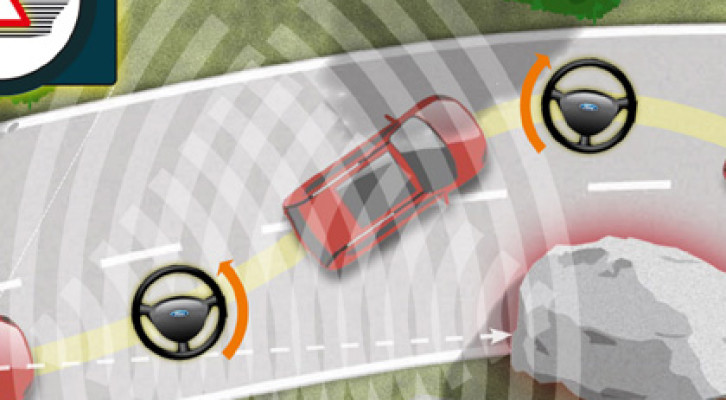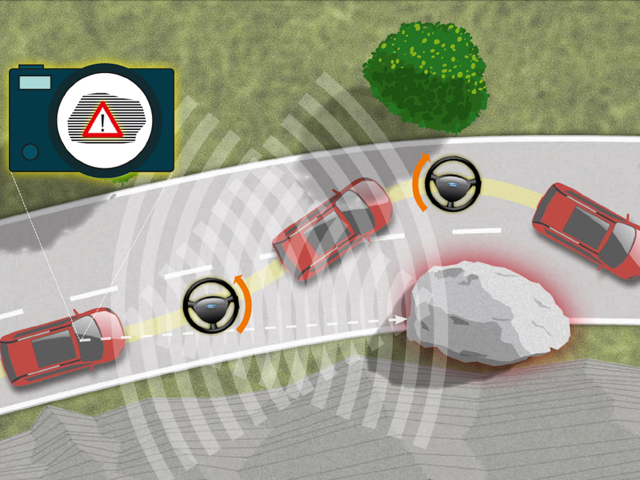The Ford Edge Concept that was unveiled at the Los Angeles Auto Show last month may not have been the flashiest dream car in the place, but it contained some of the most significant pieces of new technology. One of those is Ford’s prototype semi-automated crash-avoidance system. Combining the existing collision-mitigation system with automatic steering, this system allows the Edge Concept to automatically steer and brake to avoid a crash, and Ford is testing it with an eye toward production.
Current crash mitigation systems are able to warn the driver and then apply the brakes at the last minute to reduce the impact. Ford’s obstacle-avoidance system takes this a step further, using three radar systems and a camera to scan the road up to 650 feet ahead of the car. If there is an obstacle in the same lane as the Edge Concept and the driver does not respond to visual warnings, it will use the ultrasonic parking sensors to detect gaps around the obstacle. If there’s somewhere to go, the Edge Concept can then use the same computer that controls the automated parking assist to take over the electronic power steering and steer the vehicle around the potential collision. Ford has successfully tested the system at speeds over 38mph.
Ford says this system is an important building block in the development of autonomous vehicles, and a production version may not be far off.
“The obstacle avoidance research project is a prime example of technologies we are developing to benefit drivers whose Ford vehicles are equipped with the technology and others who share the road with them,” said Paul Mascarenas, chief technical officer and vice president of Ford Research and Innovation. “We are optimistic that through our research and findings, we will be able to reduce these types of rear-end collisions.”





